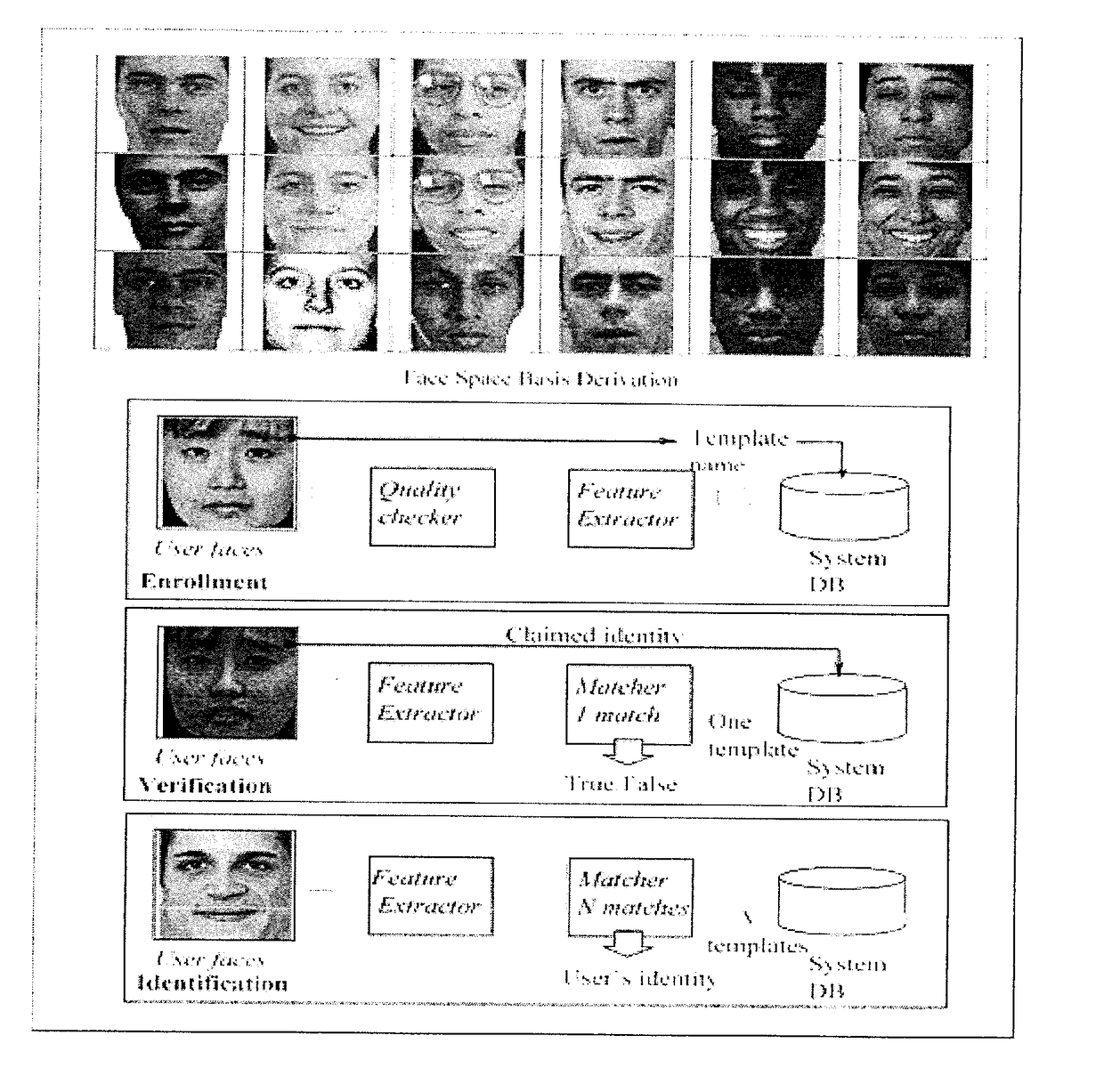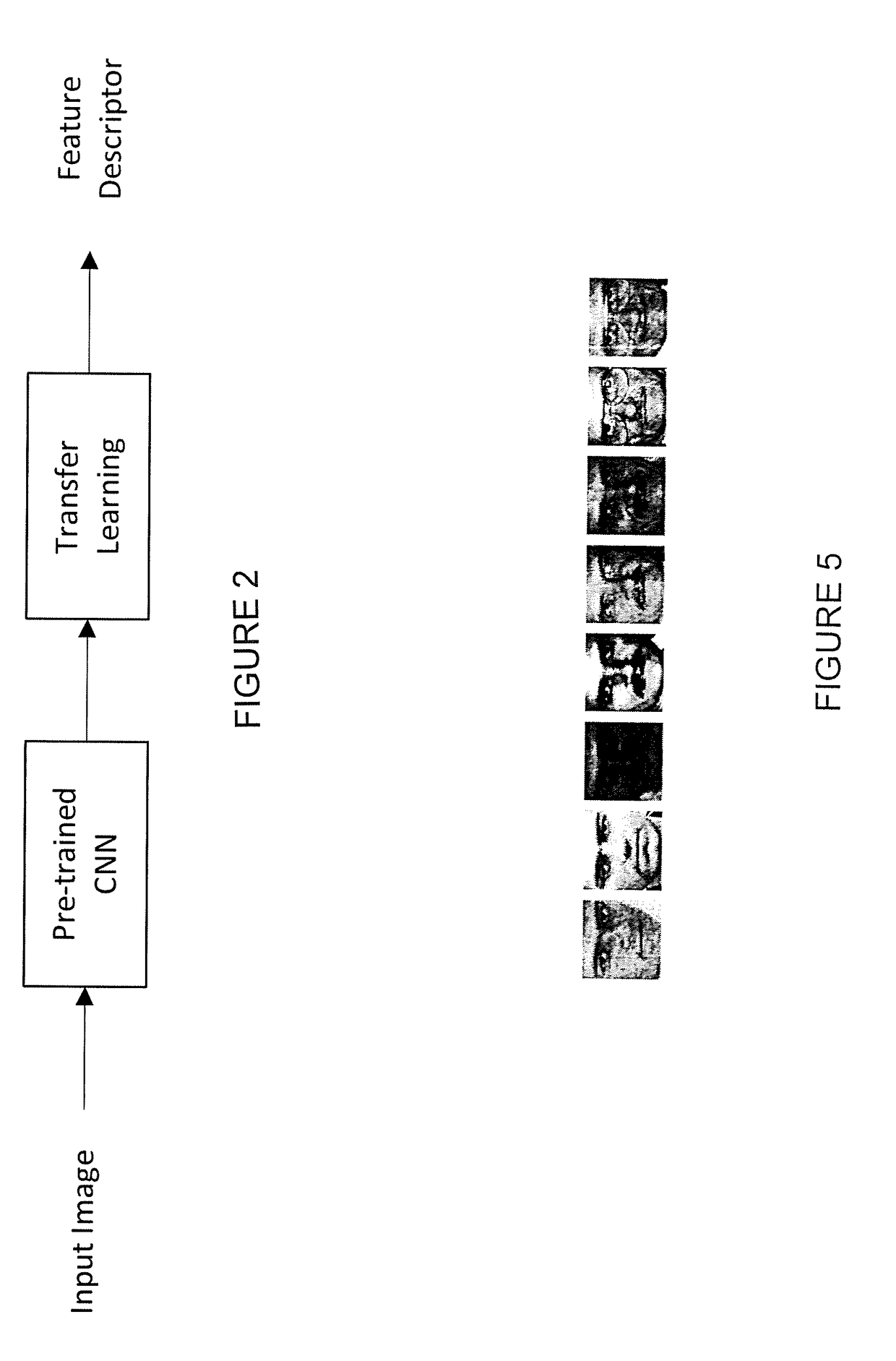Age invariant face recognition using convolutional neural networks and set distances
a convolutional neural network and age-variant technology, applied in the field of deep learning and set-based approach to face recognition subject to, can solve the problems of face authentication for recognition purposes in uncontrolled settings, biometric security systems based on facial characteristics face a challenging task, and biometric security systems based on facial characteristics face a significant challenge, so as to achieve significant impact on performance, improve recognition performance, and improve performance
- Summary
- Abstract
- Description
- Claims
- Application Information
AI Technical Summary
Benefits of technology
Problems solved by technology
Method used
Image
Examples
Embodiment Construction
[0014]The authentication protocol for face recognition is illustrated in FIG. 1. See F. Li and H. Wechsler, “Open set face recognition using transduction”, IEEE Transactions on Pattern Analysis and Machine Intelligence, vol. 27, no. 11, pp. 1686-1697, November 2005. The face space derivation involves the projection of face images into a lower dimensional subspace while seeking to preserve class discriminatory information for successful authentication of subjects. During the enrollment phase, the biometric features extracted from facial images are saved as templates. Matching can then take place against a single template (for verification), or against a list of candidate templates (for identification). Decisions are based on the confidence of the prediction. Best practices and protocols are further necessary to ensure both privacy and security in uncontrolled environments. Uncontrolled settings include pose, illumination, expression, and aging.
[0015]Age invariant face recognition is ...
PUM
 Login to View More
Login to View More Abstract
Description
Claims
Application Information
 Login to View More
Login to View More - R&D
- Intellectual Property
- Life Sciences
- Materials
- Tech Scout
- Unparalleled Data Quality
- Higher Quality Content
- 60% Fewer Hallucinations
Browse by: Latest US Patents, China's latest patents, Technical Efficacy Thesaurus, Application Domain, Technology Topic, Popular Technical Reports.
© 2025 PatSnap. All rights reserved.Legal|Privacy policy|Modern Slavery Act Transparency Statement|Sitemap|About US| Contact US: help@patsnap.com



